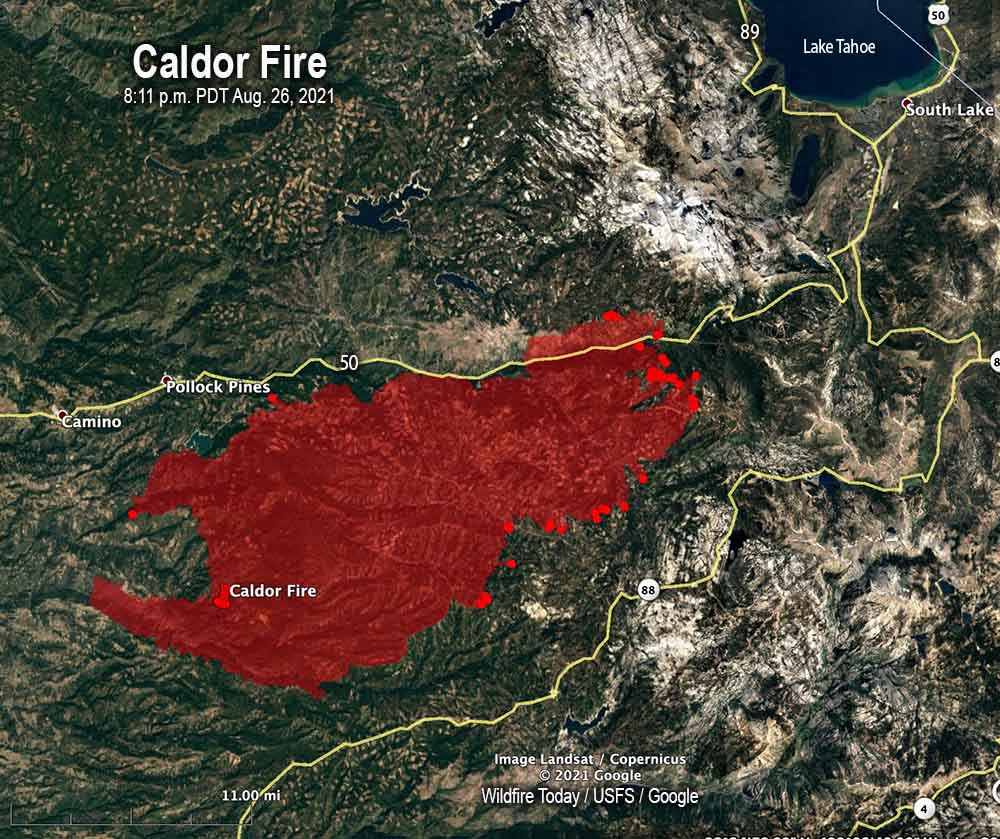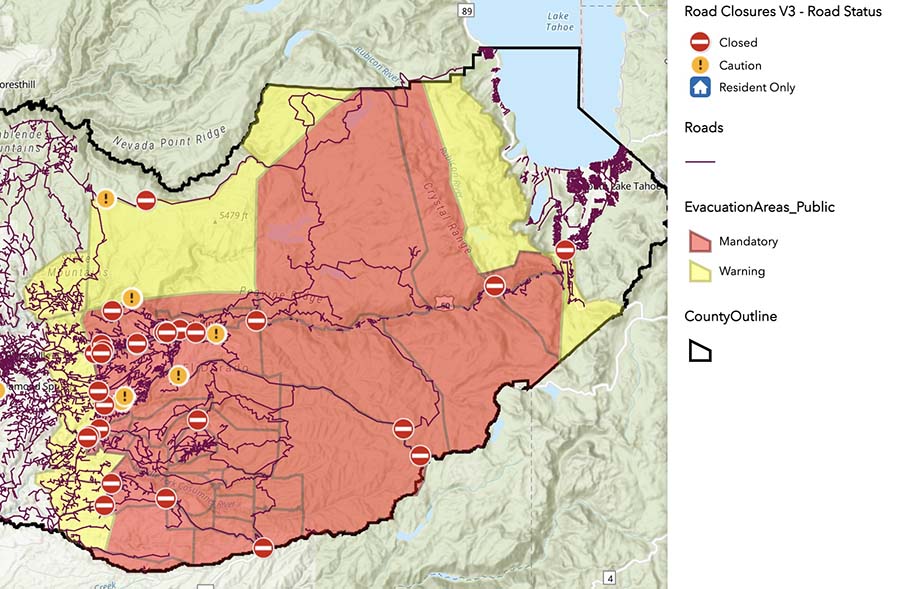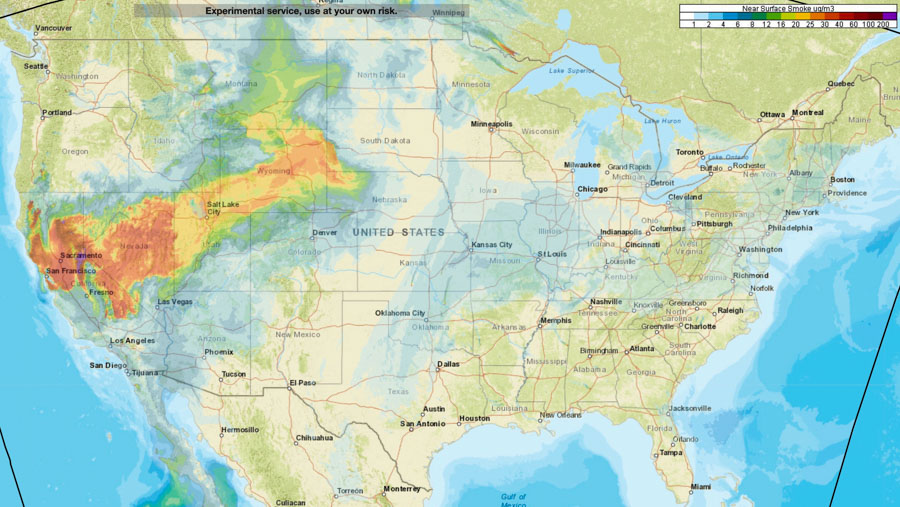9:36 a.m. PDT August 28, 2021

The Caldor Fire on Friday spread less than in previous days, but still grew by about 6,000 acres to bring the size up to 149,000 acres.
There was incremental movement on northeast side, less than half a mile, but the area where it spread most was on the west side. Late in the afternoon a wind shift pushed flames about 1.5 miles southwest along Camp Creek south of Sly Park Road, forcing firefighters to withdraw from the area. This was southeast of Pleasant Valley and northwest of Somerset. An aggressive attack from the air with helicopters and very large air tankers commenced, but visibility degraded by smoke limited their use, often having to loiter in orbit waiting for the smoke to clear.
To see all articles on Wildfire Today about the Caldor Fire, including the most recent, click HERE.
Inversions Saturday night slowed the spread, but with the relative humidity remaining mostly below 35 percent the down canyon winds from the east kept the fire active with spot fires occurring in the Camp Creek area. But the wind direction made it easier for firefighters on the east side to conduct burning operations.

7:37 a.m. PDT August 27, 2021

Additional evacuations were ordered on the 143,000-acre Caldor Fire Thursday. The blaze was very active on the northeast side, and that continued into the night due to the humidity rising to only 22 to 28 percent. Short-range spotting produced numerous spot fires across control lines. The wind subsided after midnight and the spread of the fire slowed.
Firefighting aircraft were hampered Thursday with visibility degraded by smoke.
The growth was primarily to the northeast as the fire moves closer to the small communities along Highway 50. Unofficial distances from the fire were measured based on a mapping flight at 8:11 p.m. PDT August 26. This information should not be used for planning or making decisions about evacuation. Strawberry, 1.5 miles; the southern junction of Highways 50 and 89, 8 miles; Fallen Leaf Lake, 8 miles; Lake Tahoe shoreline, 11 miles.
For Friday firefighters expect the growth will continue in the northeastern areas but will be moderated by the arrival of light winds. Spot fires are likely to occur some distance from the fire’s edge and previously undetected sleepers caused by burning embers from earlier activity may emerge. In the evening the light winds will allow nighttime inversions to form.

The weather forecast for Friday at 6,000 feet is for 8 mph winds out of the northwest with humidity in the mid-teens and a high of 78 degrees. Saturday will be warmer with lower humidity and 8 mph hour winds out of the south and west.
The fire has destroyed 469 residences and 181 other structures; more than 18,000 are threatened. The El Dorado County Sheriff in collaboration with CAL FIRE has released a map displaying properties that have been inspected for any damage or that have been destroyed by the Caldor Fire.
Mandatory evacuations are in place for 33,723 residents as well as warnings that mandatory evacuations may occur for other areas in the future. Evacuation notices are posted by the El Dorado County Sheriff’s office. Below is a screenshot from the Sheriff’s website, obtained at 7:11 a.m. PDT August 27, 2021. Go to their site for current information.

Resources assigned to the fire Thursday evening included 250 fire engines, 63 water tenders, 25 helicopters, 82 hand crews, and 71 dozers for a total of 3,204 personnel.
In the two weeks it has been burning, the average daily suppression cost of the Caldor Fire is $3.4 million; about $24 an acre. And it is far from being over.














